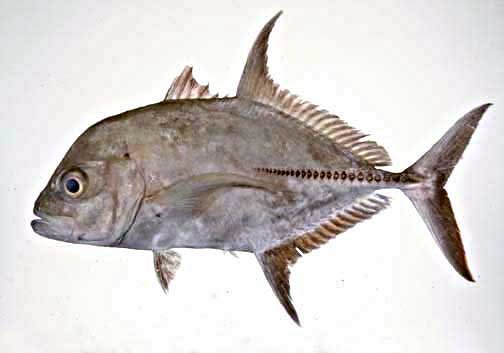3. The straight 'stem' and 'top' parts in poporo also occur in a variant of fish glyph which I have named kahi (following the hints of what Metoro said):
A rising fish means 'growth' (growing life, increasing light), and the sign inside kahi fishes probably supports this meaning. " ... Te Pei [one of the kuhane stations] should probably read Te Pe'i (unfortunately, Ms. E does not indicate glottal stops). The pe'i is a large, tasty fish (Caranx cheilio, Fuentes 1960:290), caught in the deep waters of the fishing grounds (hakanononga). In one recitation, the pe'i is likened to the 'great fish' (ika nui) and compared to the very popular tunafish (kahi) (Barthel 1960:848). This favorite food from the ocean is depicted in numerous petroglyphs." (Barthel 2) From Wikipedia the following picture of Caranx lugubris (black jack) - I could not find the referred to Caranx cheilio - illustrates an important point:
The midline stretches from its middle backwards, not as in the kahi glyph type stretching all the way from head to tail. This characteristic trait must have been well known to all the inhabitants on Easter Island. Therefore the reversed orientation in the kahi glyph type certainly was meant to catch the attention of the reader - it is a separate sign. |
|||||||||||

